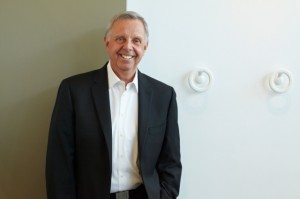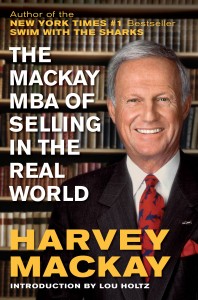At the back of John Warrillow’s Built to Sell, I saw a book mentioned as a must read. That book is Brand : It ain’t the logo*. The asterisk stands for “It’s what people think of you.”
This perspective matches and aligns with my own views quite closely. After a short chat with Ted Matthews via email, a copy of the book arrived and I was reading away.
Why is branding not a creative logo? What is it really?
Branding is the managed care and nurturing of the culture of an organization- building a brand must start, take hold, connect first on the inside, with internal stakeholders- employees and partners and then through osmosis it connects to external stakeholders- customers and critically important future employees.
The logo leads in the visual identity of an organization- important because humans are very visual beings, as Malcolm Gladwell popularized, we recognize images in a ‘blink’ vs recognizing spoken or typeset names. And in this hyper-messaging world nanosecond recognition is the Brander’s key objective.
What are the three primary tools of branding? Why are these overlooked?
Everybody who comes out of business school, knows there are strictly followed tools and rules for the financial discipline- the value protector – managed by the ‘important’ financial department. While there have never been tools or rules, or never a department, for managing the culture/brand discipline- the greatest value creator! There are now…
Tool #1 Be remark-able; have a product or service so good, so unique that people talk about it, publicizing and recommending for you. Jeff Bezos has said “Advertising is the penalty you pay for having an unremarkable product.” Honda has a new feature in their van for the young families who still buy vans- a vacuum for all the crumbs and crushed Cheerios! There, I’ve ‘remarked’ for Honda, no advertising required.
Tool #2 Own a position; a Brand must have a unique and ownable point of difference. If you are not different then you are the same, and same dies away. Volvo owns ‘safety’. Staples owns ‘easy’.
Tool #3 Build you Brand with experiences; Surround your offering with positive experiences, people never forget how you make them feel! AltlasCare, a home heating and air conditioning provider, trains their service people on every detail of experience- like where to stand and how to address people at their front door.
So if it is true that culture is the brand, why do so many companies give this so little attention while giving so much attention to creative services?
Hey, the creative part is fun, involves new ideas, working with crazy fun people, maybe a bit of Hollywood- shooting commercials, seeing your ‘creativity’ on TV. But as for culture, it’s the behind-the-scenes stuff, relationship-stuff, stuff never taught in business schools.
Founding entrepreneurs create culture instinctively- usually around their own personalities, character and their vision for something better. But as organizations grow, they outgrow their founder’s skill set or interest. BlackBerry is an example, two guys change the way the whole world communicates and then loose interest, ‘cause it’s (vision) done- they had moved onto other things that now challenge them.
This is when firms get turned over to professional managers who know how to run businesses at scale BUT, this gets back to our systemic problem, these biz grads never learned about culture nurturing or anything about brand beyond- it’s marketing’s function. Full stop!
You state that if the culture is right, everything falls into place. How should corporations deal with the fact that most of them do not have the culture right and likely not even be able to know it?
Every organization needs a surrogate for the entrepreneur. First, in this broader definition of brand- what people think of you – the CEO needs to assume the role of CBO- chief brand officer. They need to capture their guiding principles in a brand foundation- the carved-in-stone, 7-commandments that guide the organization in everything they say and do. Their core purpose- why they exist, their vision- where they are going and how they will know when they arrive. The mission- what they have to do consistently EVERY day to get there. Their values- who they are as people, their principles. Their position- as I said, how they are different. And their character- their image, their voice. Then the CBO needs to relentlessly remind people of these guiding principles and that everyone has a role in building their brand- consistency is the #1 rule of branding.
You mention an interesting quote at the start of the chapter on “Evolution, not Revolution” by Charles Kettering: “We have a lot of people revolutionizing the world because they’ve never had to present a working model.” Please discuss what that quote means to you.
Kettering was an interesting guy- inventor, businessman, a serial entrepreneur with over 180 patents. In the mid 1800’s he invented the electric starter for gas engines- started Delco- part of GM today.
For me, his quote is about all the people who think innovation and change are easy. While discounting the contribution of our ‘wacky’ entrepreneurs, impatient investors push and merge organizations destroying what made them successful in the first place- my own 30-year, 80-person firm, was deconstructed in 28 months after a merger- another unmanaged clash of cultures. Change must happen, but it must evolve, retaining the brand equity- what an organization is known for. Look, in the news recently- J C Penny is now apologizing for the rush to change by their last board appointed CEO. GAP stirred up a hornet’s nest among their stakeholders with a wholesale identity change that was also reversed. A company does not ‘own’ its brand, it’s owned by the stakeholders who love it.
What events typically precede an organization being ready for change in their culture and why is this so hard to recognize?
It becomes increasingly difficult to retain the best people and impossible to attract new stars.
This flesh-eating disease is hard to recognize, because it sneaks up slowly and is only diagnosed and reported by an under-respected department in North American organizations – HR.
And this is the root of the most critical issue of our day.
Fouled by our leaders’ misunderstanding of brand, their default positioning is ‘cheap’. Then, to ‘sell-for-cheap’ we have given away our former well-paying production jobs to Asia and now, to employ our neighbors so they CAN buy from us, we need to invent all new jobs and do it with a dwindling workforce. 70 million boomers readying to retire, only 30 million young people (not all of them stars) available to replace them.
This startling truth has been disguised by the years of recession- firms watching costs so not hiring, boomers hanging on to jobs in fear their investments won’t support them, young folks (therefore), not seeing the openings and at the same time being a generation that wants a job with meaning, a job with a organization with a core purpose.
It is time for America (and the world) to understand brand, to understand it’s a compelling culture they need.
Again that book is Brand : It ain’t the logo*. The asterisk stands for “It’s what people think of you.”


